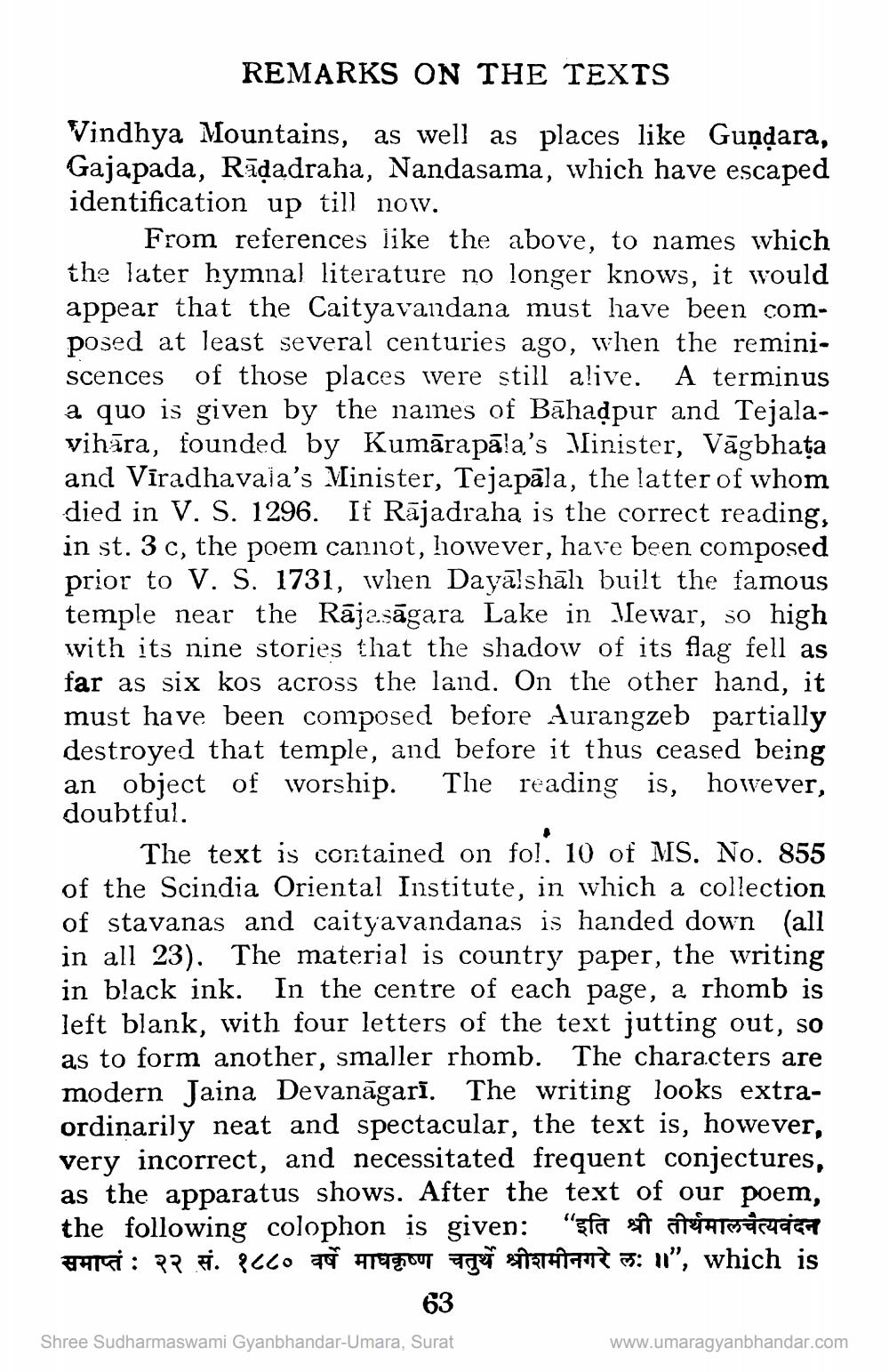________________
REMARKS ON THE TEXTS
Vindhya Mountains, as well as places like Guņdara, Gajapada, Rādadraha, Nandasama, which have escaped identification up till now.
From references like the above, to names which the later hymnal literature no longer knows, it would appear that the Caityavandana must have been composed at least several centuries ago, when the reminiscences of those places were still alive. A terminus a quo is given by the names of Bāhadpur and Tejalavihāra, founded by Kumārapāla's Minister, Vāgbhata and Vīradhavala's Minister, Tejapāla, the latter of whom died in V. S. 1296. If Rājadraha is the correct reading, in st. 3 c, the poem cannot, however, have been composed prior to V. S. 1731, when Dayālshāh built the famous temple near the Rājasāgara Lake in Vewar, so high with its nine stories that the shadow of its flag fell as far as six kos across the land. On the other hand, it must have been composed before Aurangzeb partially destroyed that temple, and before it thus ceased being an object of worship. The reading is, however, doubtful.
The text is contained on fol. 10 of MS. No. 855 of the Scindia Oriental Institute, in which a collection of stavanas and caityavandanas is handed down (all in all 23). The material is country paper, the writing in black ink. In the centre of each page, a rhomb is left blank, with four letters of the text jutting out, so as to form another, smaller rhomb. The characters are modern Jaina Devanāgarī. The writing looks extraordinarily neat and spectacular, the text is, however, very incorrect, and necessitated frequent conjectures, as the apparatus shows. After the text of our poem, the following colophon is given: "fa ft ATSIRACICH 911 : PP. 8660 a 19 het rret si 11", which is
63
Shree Sudharmaswami Gyanbhandar-Umara, Surat
www.umaragyanbhandar.com




